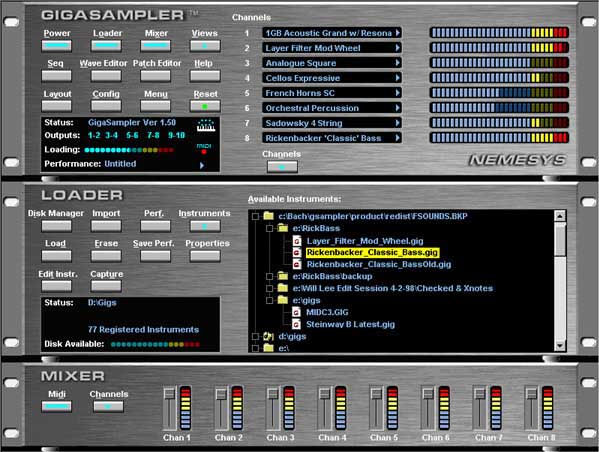SampliConv Crack License Key [Win/Mac]
- vawelsrarisusc
- May 19, 2022
- 3 min read

SampliConv Registration Code Download [Mac/Win] ... and even more... The optimized and fast-looped version of the original SampliConv (S-1001 / S-3001) is available for download at the SampliSoft website. This version was created by Simon Lee and doesn't contain any more features than the free (registered version) and it was optimized for speed. This version is a stand-alone executable and does not require any external programs. Overview of the features: - 1 Conversion mode (SF2 to WAV to WAV). - 1 Looping mode (on, off, full, single track, endless looping, WAV looping). - 1 LFO mode (VCO or ADSR). - 1 Filter mode (auto, bell, lowpass, bandpass, highpass, notch). - 4 Octave-setting: 440, 880, 1760, 3280, 4500, 7100. - 3 LFO speed: On, Off, Slow, Fast. - 3 Input/Output channels: MIDI In, MIDI Out, 1st CV In, 2nd CV In. - 4 CV output channels (1. VCO, 2. ADSR, 3. Filter, 4. LFO). - 2 Envelope parameters: Attack, Decay. - 1 Modulation parameter: Sustain, Release. - 7 Setpoints (for parameter 1-7). - Envelope fluctuations (5-second sampling window) for the parameters 1-7. - Octave-flank resampling. - Save to file with startup recording and MIDI. - Record mode for single and double recording. - Pitch-bend mode for single and double recording. - Automatically selects parameters 1-7 for a new program and saves them to file. - Automatically switches from single- to double-recording mode. - Automatically selects a new octave to play from. - Switch off or on the decay envelope. - Switch on or off the LFO for the selected sample. - Switch on or off the LFO for the selected input channel (1st or 2nd CV). - Switch on or off the LFO for the selected output channel (1st, 2nd, or 3rd CV). - Switch on or off the LFO for the selected CV input channel (2nd, 3rd, or 4th CV). - Set SampliConv [Mac/Win] SampliConv generates sound files from the currently selected source (samples or programs). It reads its settings from the Parameter window (which it remembers for every source) and converts them to soundfiles of different formats. Use: Select the desired source from the list Double-click on the sample or program and all relevant data (envelopes, LFO's, etc.) are transferred to the PC Use the parameter controls to generate the desired sound (e.g. change the sound) Start SampliConv Double-click on a newly created sound file and select another source Notes: The SampliConv application is designed to be used with the AKAI S-1000 / S-3000 or AKAI S-2000. If you want to use SampliConv with a different synth the important setting to edit is the Settings.jks file. The parameters are modifiable and can be saved with the application. With the S-1000 the values are saved in the.INI-format for the Parameter window and can be loaded with the application. SampliConv displays the Parameter window on startup, see screen shot. If the Save function is enabled in the Edit menu the settings are stored in the folder.INI. When you start the application again the settings are loaded from the INI-file. The Settings.jks-file contains the names of all possible settings. You can also edit these manually. If you change a setting in the parameter window the name of the corresponding setting in the Settings.jks-file will change automatically. In addition, you can assign a parameter name to a setting in Settings.jks-file. (If you change the parameter name in the parameter window the name of the corresponding setting in the Settings.jks-file will change automatically. It is also possible to assign a parameter name to a setting in Settings.jks-file. (If you change the parameter name in the parameter window the name of the corresponding setting in the Settings.jks-file will change automatically.) With the S-3000 you can also change the Note Repeat-settings in the Edit menu, but they have no effect. Due to technical reasons it's not possible to use SampliConv with a synthesizer which is not part of the sound-card. 1a423ce670 SampliConv What's New In SampliConv? System Requirements: OS: Windows XP SP3 or Vista SP2, Windows 7 or later Processor: Pentium 4 or equivalent, 1.6 GHz or better Memory: 256MB minimum, 1GB recommended Graphics: DirectX 9 graphics card with 1GB graphics memory, 1280 x 1024 resolution display DirectX: Version 9.0c Network: Broadband Internet connection Hard Drive: 2GB or more For some users, changing the game graphics to 16-bit mode can result in an increased FPS. Please refer to the Note below
Related links:






Comments